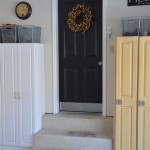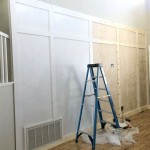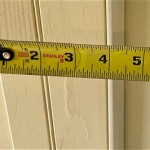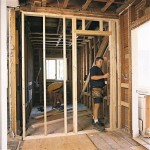Painting the interior walls of your home can be a great way to freshen up the room and give it a new look. However, it can also be quite a daunting task. Painting with a sprayer can make the job easier and can give you a professional-looking finish if done correctly. In this article, we’ll explore everything you need to know about painting interior walls with a sprayer.
Benefits of Using a Paint Sprayer to Paint Interior Walls
Using a paint sprayer to paint interior walls has several benefits. First, a paint sprayer can be faster than using a brush or roller. This is because the sprayer can cover a large area quickly. Additionally, sprayers can also provide a more even coverage of paint than a brush or roller. This can result in a more professional-looking finish. Finally, paint sprayers can be cost-effective as they can help you save on paint, as the paint goes directly onto the walls and doesn’t get wasted.
Types of Paint Sprayers for Interior Walls
There are several different types of paint sprayers available for painting interior walls. The most common types are:
- Airless paint sprayers – these are the most powerful type of sprayers and are great for covering large areas quickly. They work by using a high-pressure pump to atomize the paint.
- HVLP paint sprayers – these sprayers use a lower pressure than airless sprayers, which makes them better for more detailed work. They are also much quieter than airless sprayers.
- Compressed air sprayers – these sprayers use compressed air to atomize the paint, making them a great choice for detailed work. They are also relatively quiet.
Preparation for Painting Interior Walls With a Sprayer
Before you begin painting your interior walls with a sprayer, there are several steps you should take to ensure the best results. First, you should clean the walls to remove any dirt or dust. This will help the paint adhere better to the walls. You should also fill any cracks or holes in the walls with spackle or joint compound. Finally, you should use masking tape and plastic sheeting to cover any areas that you don’t want to be painted, such as windows and door frames.
Tips for Painting Interior Walls With a Sprayer
When painting interior walls with a sprayer, there are several tips that can help you achieve a professional-looking finish. First, you should always use a sprayer with adjustable pressure settings. This will allow you to adjust the pressure to suit the type of paint you are using. You should also always use a sprayer in a well-ventilated area, as the paint fumes can be quite strong. Finally, you should always use a sprayer to apply a thin, even coat of paint. This will help you achieve a smooth, professional-looking finish.
Conclusion
Painting interior walls with a sprayer can be a great way to give your home a new look. However, it is important to take the time to properly prepare the walls and use the right type of paint sprayer for the job. With the right preparation and technique, you can achieve a professional-looking finish with a sprayer.




![BEST Paint Sprayer for Walls [Interior & Indoor Paint Sprayers] Paint](https://i2.wp.com/paintsprayerguide.com/wp-content/uploads/2020/02/Indoor-Paint-Sprayer.jpg)










Related Posts








